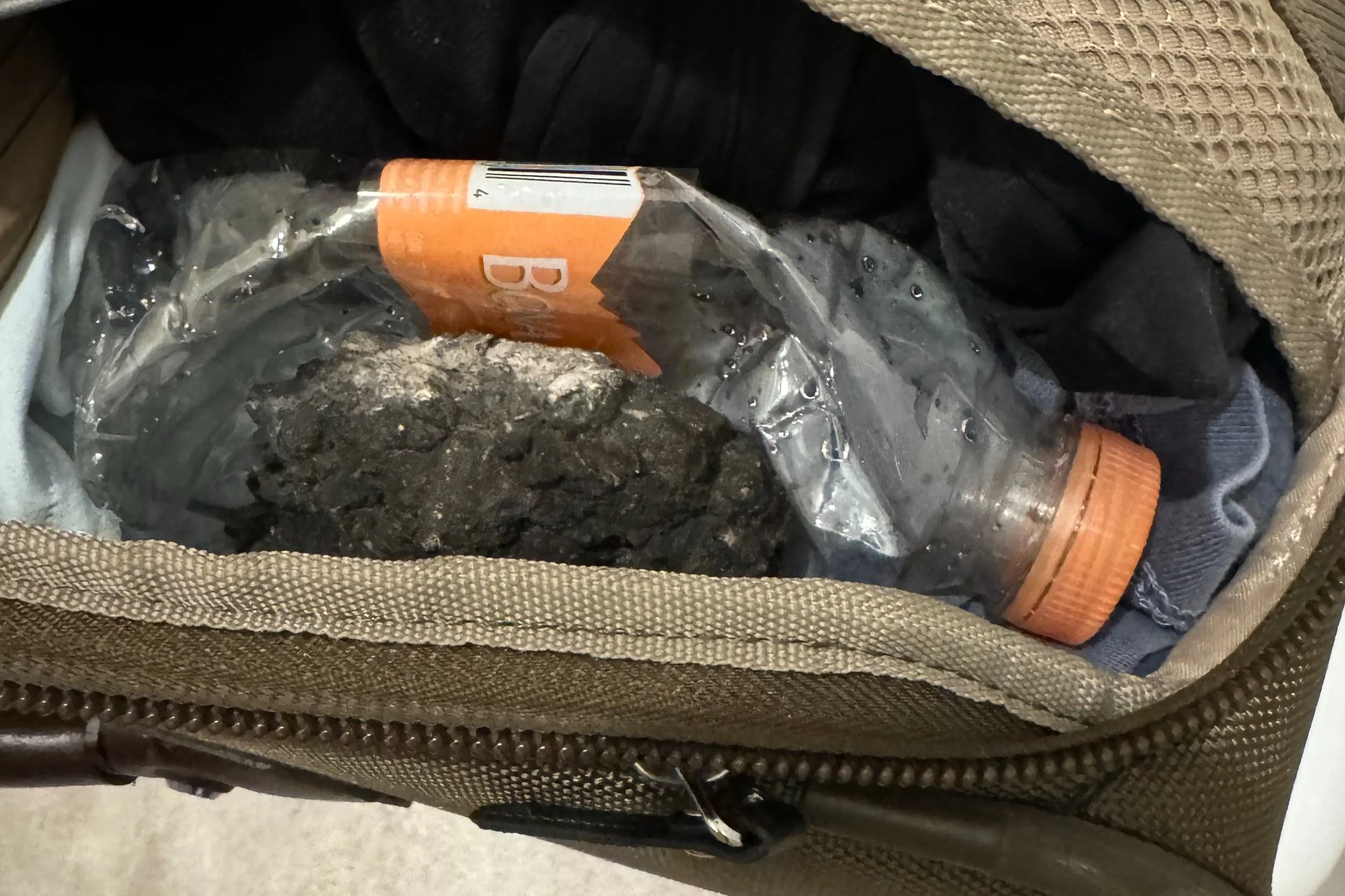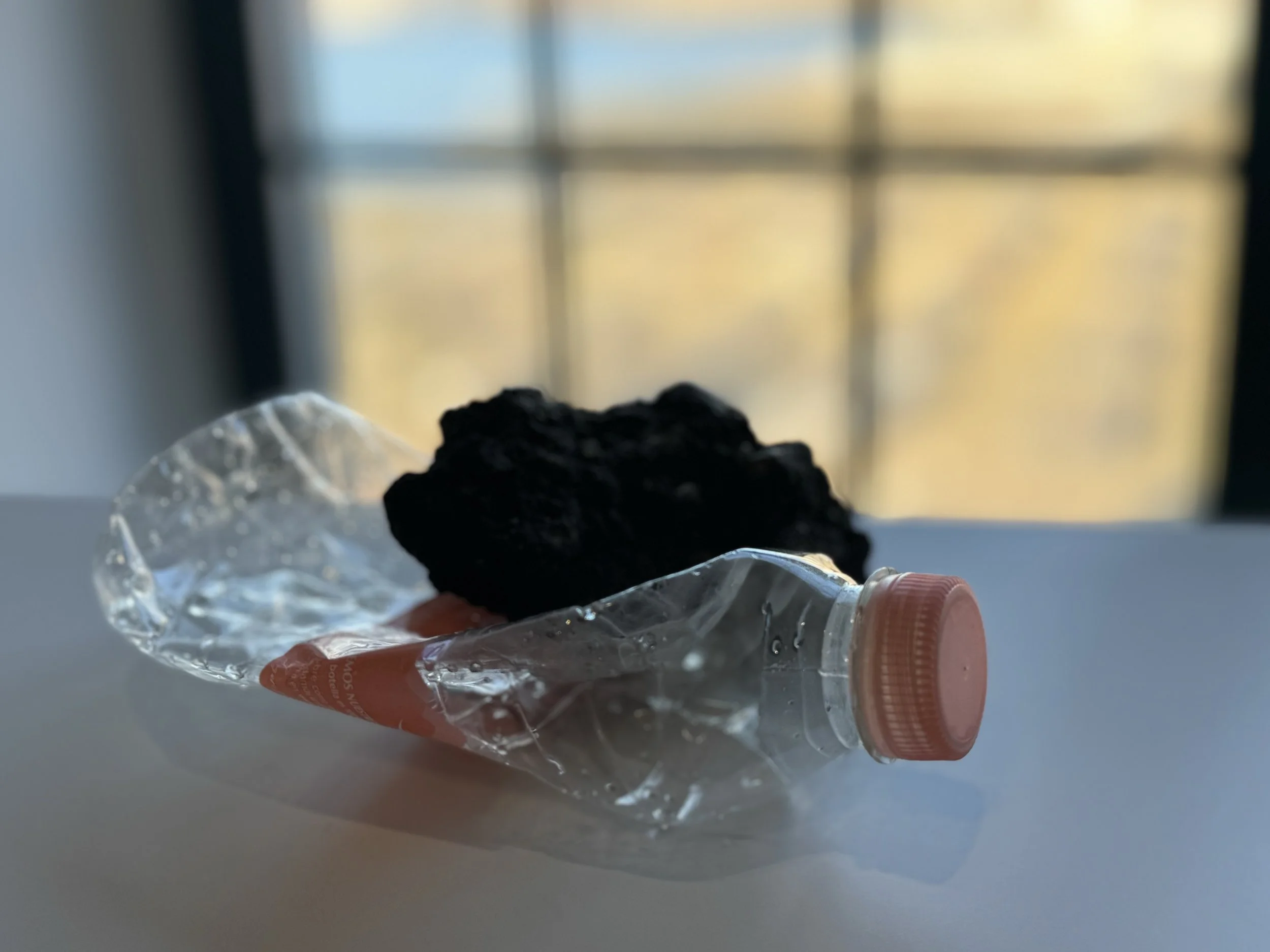Whether it's a long weekend or two weeks abroad, my trusty but chronically overstuffed TravelPro carry-on suitcase and I are ready for anything. Wool and cotton clothing in black, white, and one “accent color” are ready for a hike or a night on the town. Cosmetics and heels often find themselves in my husband’s bag, leaving no room for traditional souvenirs. But there’s always a corner of my suitcase ready to take home a piece of asphalt.
Traveling from CDMX to Baja this week, I was finally stopped for this abhorrent behavior.
The Mexican Federal Civil Aviation Agency screener was obviously in training and understandably diligent in one of Latin America’s biggest and most important hubs. After scanning my bag for explosives, her hand went right to the top right corner where it always fits, the asphalt. It was gratifying to watch her, and her supervisor look at this chunk of petroleum and aggregate from every which way, holding it at eye level as if it were a gem or artifact. Once they waved it off, I made the universal sign for crazy and repeated ‘loco, loco, loco, artista, gracias” with a big smile.
This precious piece was from the La Condesa neighborhood of CDMX and the result of me slowing down.
It started with nausea, something that is happening with increasing frequency as I age and speed around in cabs and Ubers, trying to keep up at work while marking the next “see and do” spot on Google Maps. My husband and I arrived early to lunch with a friend, and I was petulant to be missing the Art Week fairs. Walking the block, hot and lightheaded, I spotted, of all places, a gem store. Inside, my hand went right for smokey quartz, knowing I needed to move out of my head and phone and back into my body to be more grounded.
Stepping out of the store and turning from Av Oaxaca to Colima, we found the motherload of art supplies. This mishmash of urbanism could have been anywhere in the Northern Hemisphere. A tree had uprooted the sidewalk while a driveway and road had been torn up at some point, leaving bits of asphalt, cement, trash, and tree roots intermingled in a wash of urban, the kind of unlevel city terrain you look at to keep your footing but not for its intrinsic value. Suddenly, I was as intrigued as I’d been at the Museo Nacional de Antropologia archeology museum, imagining what failure of urban planning, lack of coordination, or simply individual decisions had been made or not made to leave this mishmash of nature and man-made. It didn’t take long to find the perfect piece.
Why do choose asphalt over, say, a new trinket to take home?
It started in 2013 when I was still steeped in the indoctrination of grad school, in the conflicted state of being a driver of consumer culture and wanting nothing to do with it. The post-MFA paradox. Making work with “stolen” pieces of asphalt was a way not only to take up space, but if the works were to sell, I could, like a developer, privatize public space.
My interests shifted to single-use plastics around 2018 during a time when I had the privilege and opportunity to travel internationally. The environmental guilt was enormous. I vowed to cast in cement every water bottle I ever used. I was metaphorically saddling myself with heavy items I would have to live with. And thus, empty water bottles have traveled to Boston from Louisville, KY, the Aeolian Islands off Sicily, Kure Beach, NC, Montreal, Baja California Sur, and even my parent’s Connecticut home.
This particular piece of La Condesa, CDMX asphalt, and a Bonafont water bottle (served to me at the home and studio of Pedro Reyes and Carla Fernandez) made it back stateside. Together, they’ve been added to a growing accumulation that serves as a hair shirt for my carbon footprint and touristic ways, as souvenirs of peoples and countries I respect, and moreover, as ways my body navigates public space.

